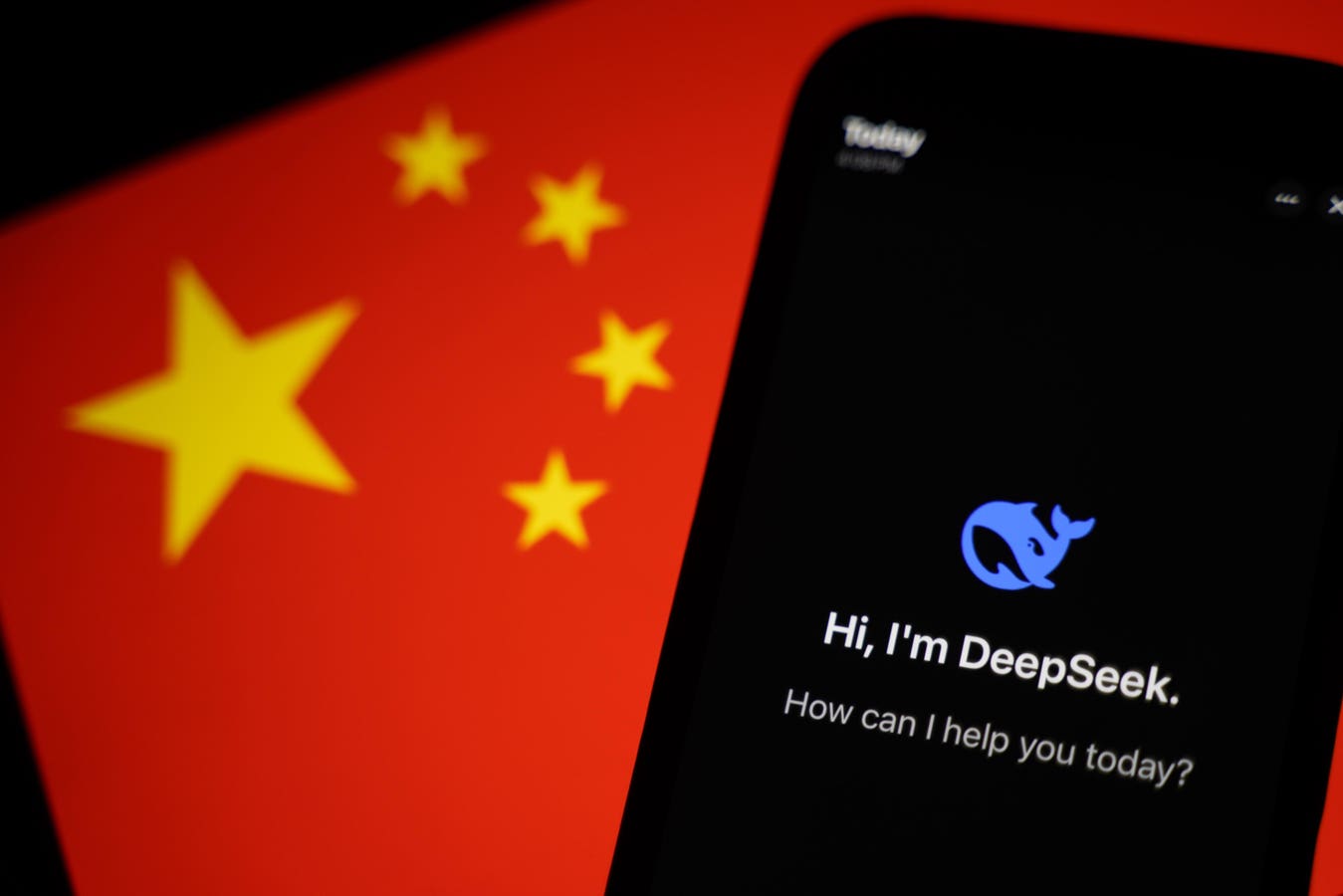DeepSeek, the latest in a line of Chinese tech exports, is set to revolutionize global energy … [+]
Chinese upstart DeepSeek has already inexorably transformed the future of artificial intelligence. Established American AI giants such as Nvidia, Microsoft, and Google saw their stocks enter freefall. Once, American AI hegemony seemed unassailable, with OpenAI founder Sam Altman boasting that competition with established leaders was “hopeless.” That statement now oozes dramatic irony; the Chinese cause is obviously far from futile. This market shift isn’t due to a qualitatively superior new product, advertisements, consumer pricing, distribution agreements, user interface, or anything else that usually signals a new leader in consumer tech. Energy, more precisely DeepSeek’s ability to use far less of it, is why it is so groundbreaking.
What Is DeepSeek’s Significance?
Unlike competing large language models, DeepSeek utilizes an open-source, decentralized model. Financially, this gambles on attracting users who want to customize it for their own objectives while simultaneously marketing to individual users satisfied with the standard experience. Anybody can license DeepSeek for free under a standard open MIT license. Since DeepSeek is, as of writing, the most popular app in the Apple, Google, and Android App stores while simultaneously its value soars, this strategy seems validated.
Currently, it is not entirely certain how DeepSeek was trained. DeepSeek has been accused of violating American export controls, concealing the actual amount of chips employed, secretly piggybacking off other platforms such as TikTok, and illicitly utilizing the work of its American competitors.
The truth of these allegations will be ascertained in time, but even adversaries such as Nvidia have conceded that DeepSeek’s breakthrough is brilliant. DeepSeek focuses on a single branch of machine learning: reinforcement learning. Reinforcement learning focuses on self-correcting rewards and immediate inputs for something that can be measured progressively, such as progress through a simple maze. This contrasts with Q learning, the dominant method behind ChatGPT and others, focusing on huge-scale binary outcomes, such as identifying an object.
Technically, this decentralized nature relying on reinforcement purportedly learning means DeepSeek can leverage far fewer computer chips and energy. Researchers at the University of California, Berkley, have already replicated DeepSeek’s core model with less than one-hundred dollars of equipment.
In conjunction, all these signal one crucial development: AI breakthroughs are no longer merely scaling up equipment, training data, and processing.
American AI leaders are scrambling to respond to China’s breakthrough and salvage prospective … [+]
What Changes Now?
AI has long been recognized as a key factor in nudging the world towards an energy crisis. The average ChatGPT search requires at least 10 times as much energy as a standard Google search. 2024 projections of AI energy usage showed that had nothing changed, AI would have used as much electricity as Japan by 2030. This impact is already measurable in areas where AI data centers have proliferated, such as the Washington D.C. suburbs of northern Virginia, which are already buckling under new energy demands from AI data centers.
It would be excellent news for the economy and environment if we could decrease this projected demand. This is less than welcome news for American AI companies, which now must contend with enormous sunk costs and reconfigure their entire business model. These sunk costs are in the form of vast reserves of now superfluous processing chips, multiple flagship supercomputers, real estate for data centers, and expenditures in outmoded training strategies.
Google invested copious amounts of money into a new form of nuclear reactor, the Small Modular Reactor, to ensure it had enough electricity to feed its AI enterprises. OpenAI is also into nuclear reactors, opting for a large investment into nuclear fusion power as its path forward. Chevron announced it would cash in on AI energy requirements by building multiple natural gas plants to directly power AI data centers. Some of these investments will be retrievable, but many will not.
Companies are not the only losers. The U.S. national AI strategy has been rendered suspect. Project Stargate, the 500-billion-dollar investment plan to supercharge America’s AI dominance, now appears to be an exercise in throwing good money after bad. America’s entire AI strategy relied on scaling up and concentrating superior resources, human capital, and energy. Many of Trump’s energy-focused and AI-focused executive orders indirectly reference this by emphasizing energy availability for frontier technologies. That is now a losing proposition.
DeepSeek’s sudden success represents only the latest battle between Chinese big tech and the … [+]
The China Dimension
While America is by no means in a hopeless position, merely a new one, China stands to gain enormously from this development. Even if every negative critique of DeepSeek turns out true, at minimum that still makes DeepSeek a peer competitor. If even some of DeepSeek’s advantages are true, then almost every major obstacle China confronted in becoming an AI superpower, especially energy, has been wiped away. This comes at an opportune time fro Beijing, as China’s recent 411 billion dollar stimulus spending package, designed to fight deflation, pushed up energy demand and prices and squeezed out high-tech firms in favor of traditional manufacturers, leaving little cheap energy for AI.
This AI breakthrough is the latest in a string of good news China has had on the energy front. Markets were buoyed by statistics released by the State Council that informed predictions that Chinese energy usage would climb while emissions dropped, signaling successes in its nuclear and renewables investment strategy. The mood in the Chinese press and investment community is predictably but justifiably jubilant.
DeepSeek represents a potential paradigm shift, a total technological discontinuity. It has effectively reset the playing field between the U.S. and China in the AI space, where long-term inbuilt advantages and disadvantages have been temporarily erased as the board resets. More importantly, this development has fundamentally upended the energy space. The bedrock assumption on which so much of the world based its energy policy, the inevitable climbing demand from AI, has evaporated. In this brave new world, the U.S. needs to reevaluate the fundamentals of its energy policy and reconsider the recent deluge of executive orders and funding for Stargate. If we don’t, we risk playing a new game with obsolete rules only to the advantage of China.


